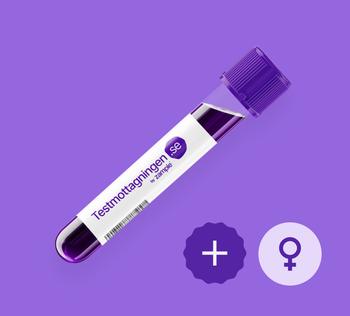What is progesterone?
Progesterone prepares the uterus for possible pregnancy by thickening its lining and reducing its contractile activity. If fertilization does not occur, the production of progesterone decreases, which starts the menstrual cycle. If conception does occur, however, progesterone helps maintain the pregnancy by preventing further ovulation and reducing the risk of miscarriage.
Progesterone also has other functions in the body, such as regulating sleep and mood, as well as affecting the health of the skin.
Why analyze progesterone?
Progesterone can be analyzed for various reasons, usually to assess ovulation, monitor pregnancy or investigate hormonal disorders.
A common reason for analyzing progesterone is to assess whether ovulation has occurred. Progesterone levels rise after ovulation and remain high for the second half of the menstrual cycle. By measuring progesterone in the blood or in the urine, one can determine if ovulation has occurred and when it has occurred. This can be useful for couples trying to conceive, and to investigate anovulation (absence of ovulation).
During pregnancy, progesterone levels rise further and are often used to monitor pregnancy progress and ensure progesterone production is high enough to support a healthy pregnancy. Low levels of progesterone during pregnancy may indicate a higher risk of miscarriage or other complications, while high levels may indicate a possible pregnancy complication such as a cloudy pregnancy.
Progesterone can also be analyzed to investigate hormonal disorders such as polycystic ovary syndrome (PCOS), endometriosis or infertility. By measuring progesterone together with other hormones, such as estradiol (estrogen), doctors can assess the hormone balance.
What can a low level of progesterone mean?
A low level of progesterone can mean different things depending on the circumstances. Some of the most common causes of a low level of progesterone include:
- Anovulation: If you do not ovulate, the production of progesterone in your body decreases. This can result in low levels of progesterone during your menstrual cycle.
- Threatened miscarriage: Low levels of progesterone during a pregnancy may indicate a higher risk of miscarriage or a cloudy pregnancy.
- Luteal phase insufficiency: This happens when the body does not produce enough progesterone during the second half of the menstrual cycle after ovulation, which can cause infertility or prevent a normal pregnancy.
- Polycystic ovary syndrome (PCOS): Women with PCOS often have low levels of progesterone due to irregular ovulation and hormonal imbalance.
Symptoms of low progesterone levels
The symptoms of low levels of progesterone can vary depending on the cause. The most common symptoms include irregular periods, difficulty conceiving, menstrual pain, PMS symptoms, and mood swings.
What can a high level of progesterone mean?
- A high level of progesterone can also mean different things depending on the circumstances. Some of the most common causes of a high level of progesterone include:
- Pregnancy: During a normal pregnancy, the production of progesterone increases in the body, which can lead to high levels.
- Corpus luteum cyst: A cyst can form on the ovary after ovulation and cause high levels of progesterone.
- Estrogen deficiency: If the body does not produce enough estrogen, it can lead to high levels of progesterone as a compensatory mechanism.
- Adrenal tumor: A tumor on the adrenal glands can cause high levels of progesterone and other hormones.
Symptoms of high levels of progesterone
The symptoms of high levels of progesterone can also vary depending on the cause. The most common symptoms include irregular periods, enlarged breasts, acne, weight gain, mood swings and fatigue.
Reference range - progesterone
Women:
- Follicle phase: < 4.5 nmol/L
- Luteal phase: 11 - 81 nmol/L
- Postmenopause: < 2.3 nmol/L
Men:
- 0.9 - 3.9 nmol/L


































